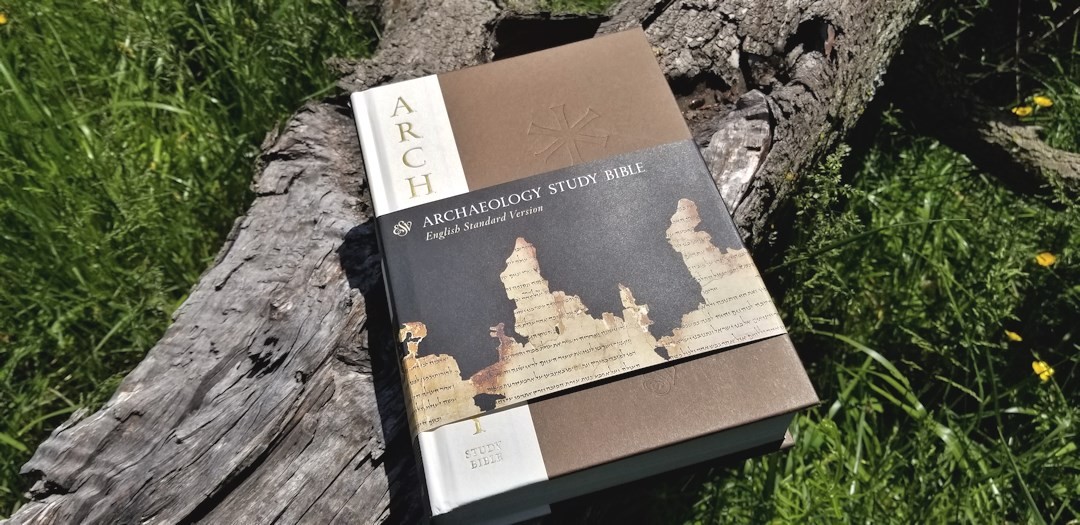
Biblical Archaeology is one of my favorite topics, so you can imagine how eager I was to see Crossway produce a study Bible based on biblical archaeology. The ESV Archaeology Study Bible is a brand new study Bible based on the latest research. Unlike other study Bibles, this one is written by actual archaeologists and epigraphers who are working in those fields and have the goal of producing the most reliable study Bible available based on archaeology. I’m reviewing the hardcover edition, ISBN: 9781433550409, made in China.
Crossway provided this Bible free for review. I was not required to give a positive review, only an honest one. All opinions are my own.
_________________________________________________________
This book is available at (includes some affiliate links)
and many local Bible bookstores
_________________________________________________________
Video Review
Materials


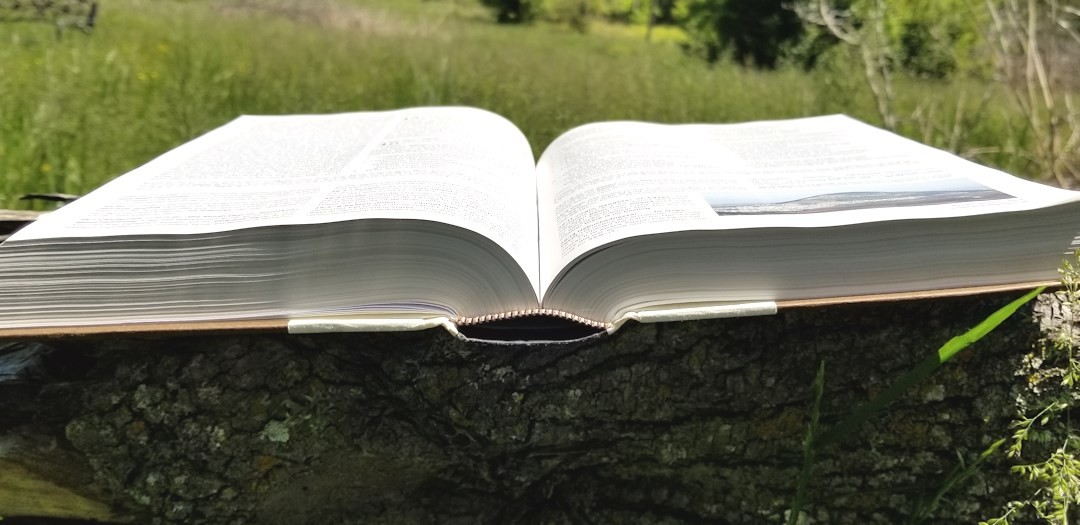
This is a hardcover edition with thick paper in brown and cream over boards with text and a symbol embossed into the front. The word ARCHAEOLOGY is stamped in gold. The spine is brown with the text and a pattern stamped in gold. It has a sewn binding. The overall size is 9.5 x 6.75 x 1.87″.
The paper is Thin Coated in 36gsm. It’s white in color and it’s highly opaque. It feels like good quality paper. It does feel coated but it also has just enough rough texture to easily separate the pages by rubbing them with my fingers in one hand. I had no issues turning pages.
Typography


The text is presented in double column paragraph with translation footnotes in a single column under the text and the references in a single column under that. Archaeological notes are placed at the bottom of the page in two columns and are separated from the text by a line.
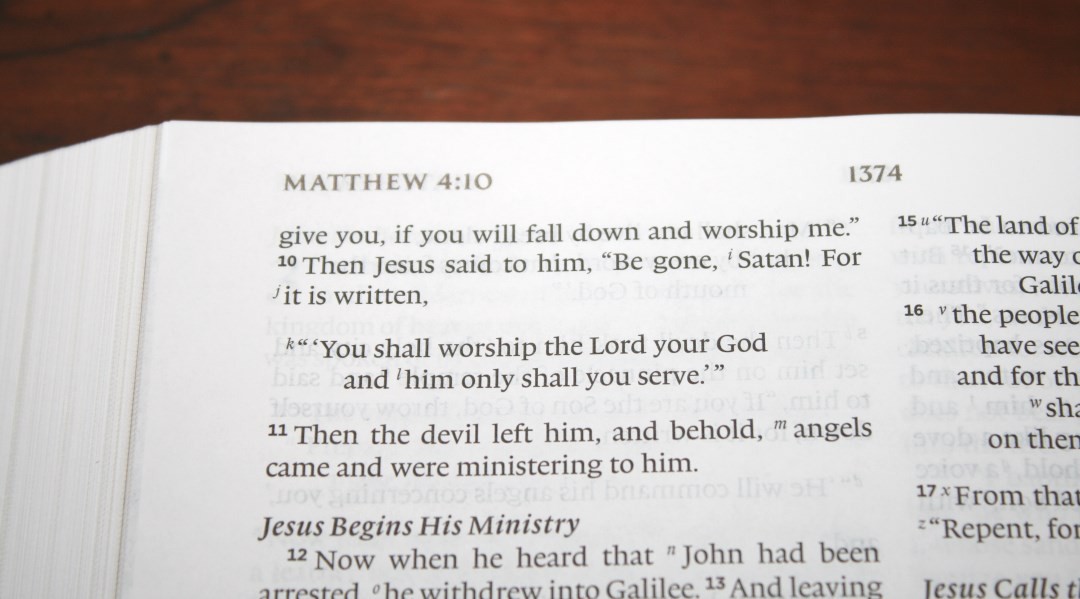
The typeface is black-letter with about a medium to dark in darkness. I found it easy to read without the best lighting. It’s 9-point and has around 45 characters per line with around 9 words per line. It has a good amount of leading (the space between the lines). It doesn’t seem to be printed with line-matching. This is mostly noticeable in the poetic settings. There are so many notes that I don’t think line-matching would matter that much.
References

It has a lot of references, making this an excellent choice for study and sermon prep. Here are some example references to help you compare:
- Genesis 1:1 – Job 38:4-7; Ps 33:6; 136:5; Isa 42:5; 45:18; John 1:1-3; Acts 14:15; 17:24; Col 1:16,17; Heb 1:10; 11:3; Rev 4:11
- Deuteronomy 6:4 – Mark 12:29; Isa 42:8; Zech 14:9; John 17:3; 1 Cor 8:4,6
- Isaiah 9:6 – Luke 2:11; John 3:16; Isa 7:14; Matt 28:18; 1 Cor 15:25; Isa 22:22; 28:29; 10:21; Deut 10:17; Neh 9:32; Jer 32:18 Ps 45:3; 72:17; Isa 63:16; John 14:18; Ps 72:7; Eph 2:14; Isa 11:6-9
- Matthew 17:20 – John 11:40; Matt 6:30; 21:21, 22; Mark 11:23; Luke 17:6; Matt 13:31; 17:9; 1 Cor 13:2; Mark 9:23
- Mark 11:23 – Matt 17:20; Ps 46:2; 1 Cor 13:2; Rev 8:8; Rom 4:20; 14:23; James 1:6; Mark 16:17; John 14:12
- Mark 12:29 – Luke 10:27; Deut 6:4, 5; Rom 3:30; 1 Cor 8:4,6; Gal 3:20; Eph 4:6; 1 Tim 1:17; 2:5; James 2:19; 4:12; Jude 25; Matt 19:17; 23:9
- John 1:1 – Gen 1:1; Col 1:17; 1 John 1:1; Rev 1:4,8,17; 3:14; 21:6; 22:13; 19:13; Heb 4:12; 1 John 1:1,2; John 17:5; Phil 2:6
- John 2:19 – Matt 26:61; 27:40; Mark 14:58; 15:29; John 10:18
- Acts 2:38 – Acts 3:19; 20:21; 26:18, 20; Luke 24:47; Acts 22:16; 8:12; Mark 16:16; Acts 10:48; 8:16; Mark 1:4; Acts 10:45; 8:15, 20; 11:17; John 7:39
- 1 John 1:1 – John 1:1; 1 John 2:13,14; Acts 4:20; John 19:35; 1 John 4:14; John 1:14; 2 Pet 1:16; Luke 24:39; John 20:27
Book Introductions
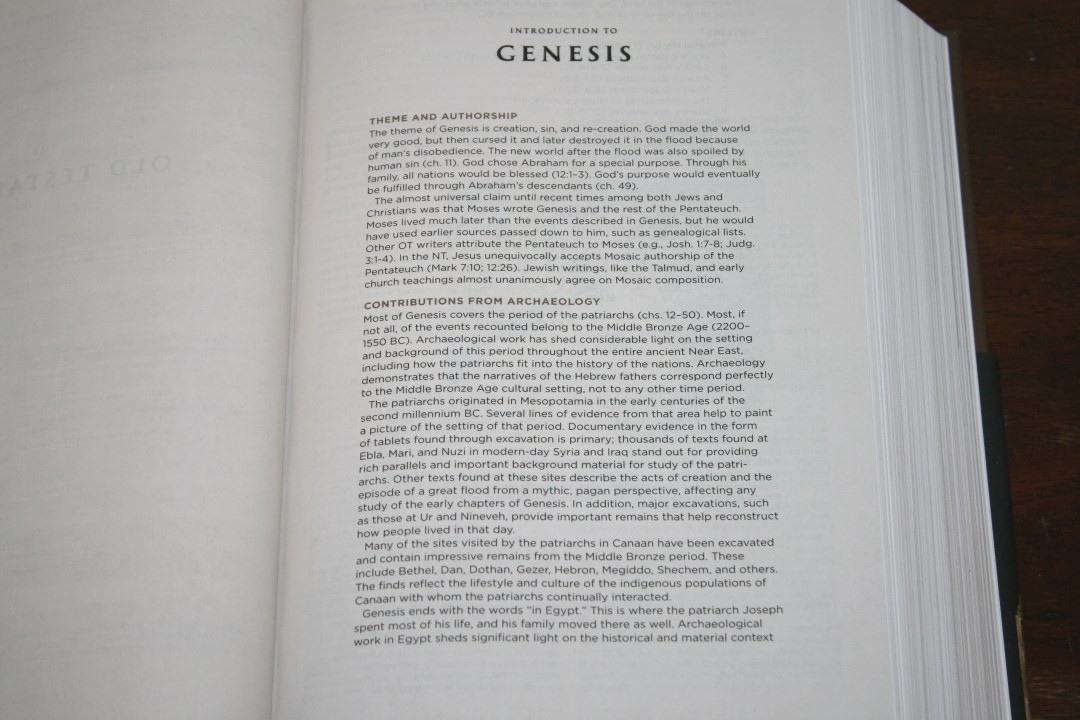
The book introductions focus on archaeology- showing how field-work has helped us to understand the books better. They include information such as the author and title, audience, date of writing, background, occasion, purpose, themes, contributions from archaeology, a short outline, and the setting. Most take a page or two for this information. Several of the books that are written to a Church includes detailed information about the location, which is usually another 1-3 pages of material. Many have photos of the location and artifacts that were found there.
Study Material
The goal of the study material is to steer clear of “pop-archaeology” and produce material that’s reliable and trust-worthy. The notes are written by actual archaeologists who have academic training and many years experience that includes on-site digs. The notes are also relevant and accessible. This isn’t just historical information that’s interesting. They’re useful for pastors and teachers to help their congregations to understand more about the Bible itself, and for seminarians in the study of apologetics. There isn’t much theology in the study material.
Articles


It has 15 in-depth articles. They’re placed at the beginning, between the testaments, and at the end. They’re well-written and informative. I like the topics they’ve chosen for these articles. I’d like to see a little more about manuscripts though.
- Introduction to the ESV Archaeology Study Bible
- What is Archaeology?
- Ten Most Significant Discoveries in the Field of Biblical Archaeology
- Daily Life in Israel in the Old Testament Times
- Judea-Palestine in the Time Between the Testaments
- The Dead Sea Scrolls
- The Roman Empire and the Greco-Roman World
- Daily Life in Judea-Palestine in the New Testament Times
- Doing Archaeology
- Archaeology as an Academic Discipline
- Expository Preaching and Archaeology
- Archaeological Dating
- Biblical Geography and Archaeology
- Inscriptions, Coins, and Papyri
- A Short History of Archaeology in the Near East
Notes
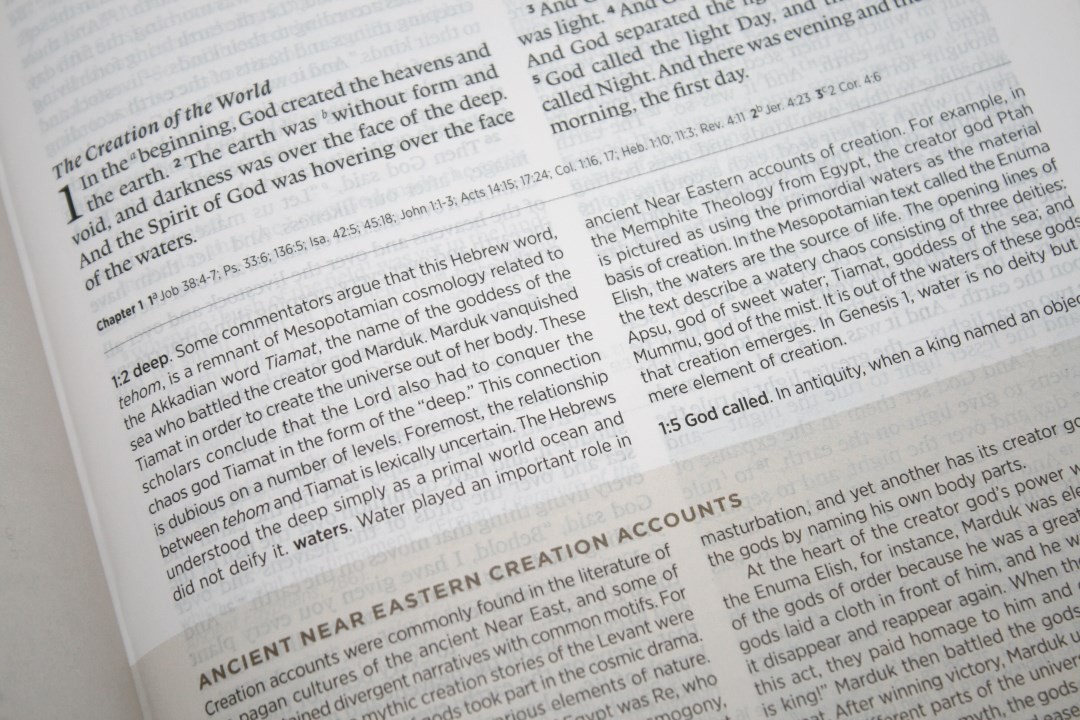
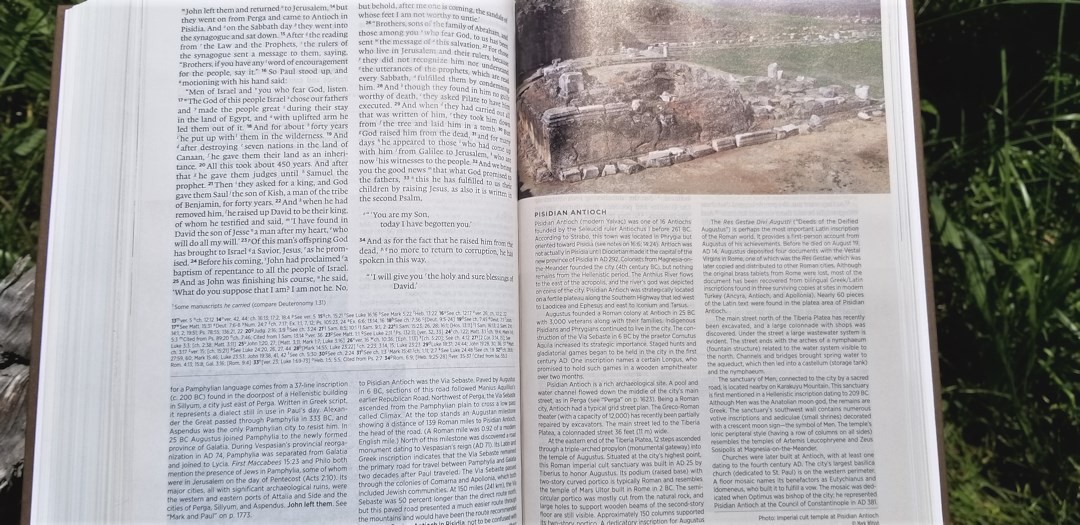
There are over 2000 study notes that are placed at the bottom of the page. They cover archeology, geography, and history, and include people, places, items, and events. They also include color photos, maps, charts, diagrams, etc. These are great for visual aids in getting a better understanding of the text. There’s an index to the maps in the back.
Sidebars
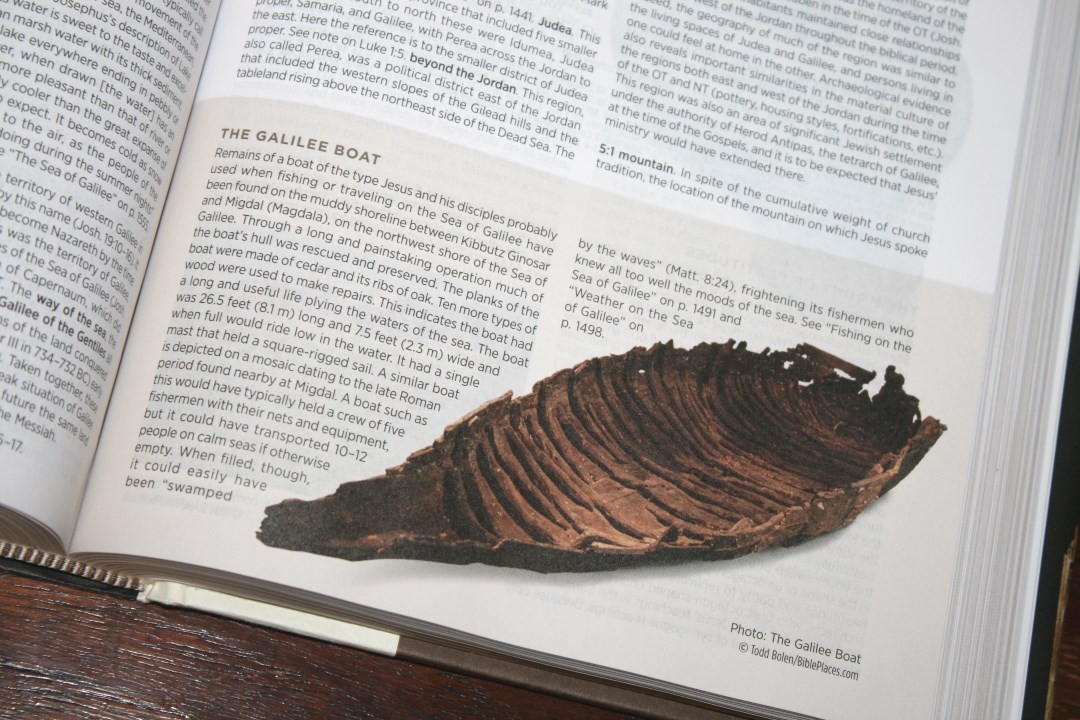

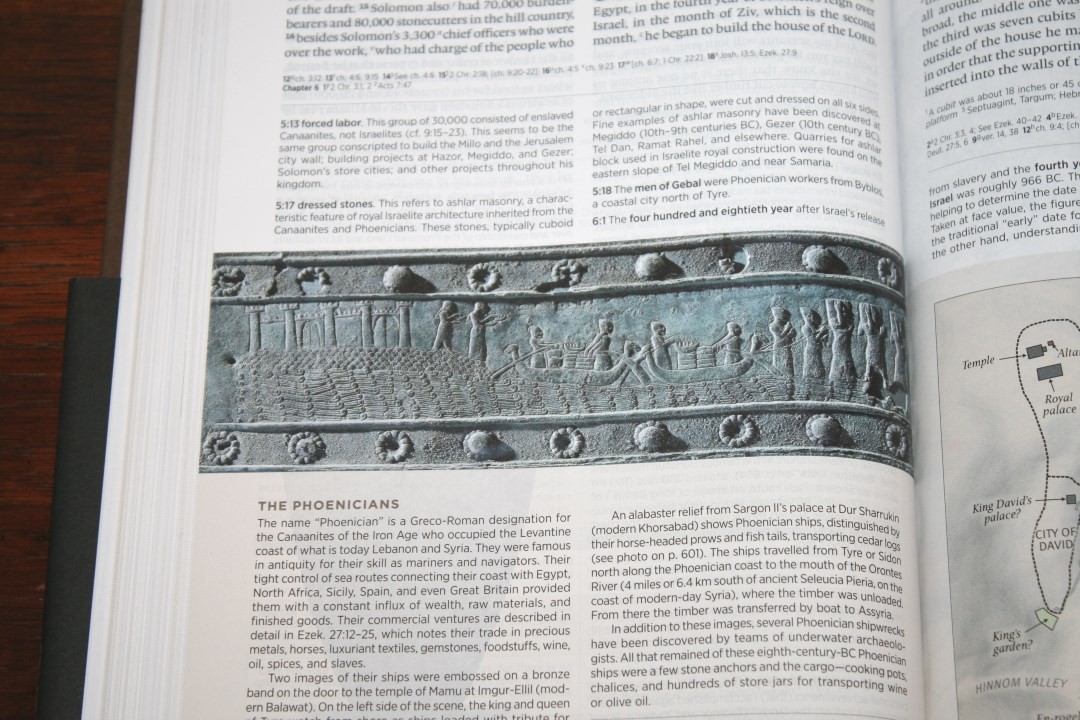

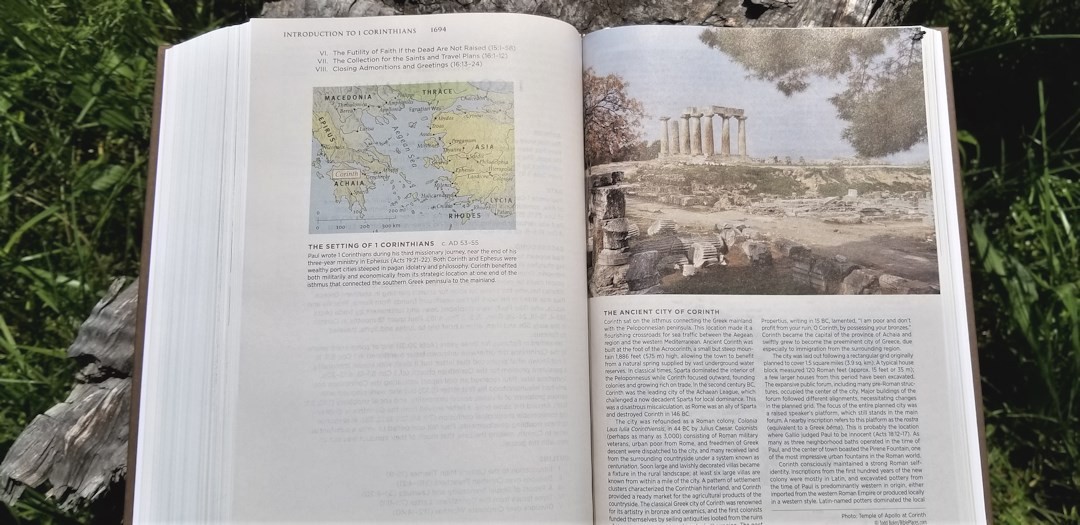
Sidebars are shorter articles that are spread throughout the text. They’re placed within the notes-area at the bottom of the page and are printed over a colored background. There are tons of them and they include lots of information about places, people, events, artifacts, etc., and include full-color photos, charts, maps, and more. There’s an index to the sidebars in the back.
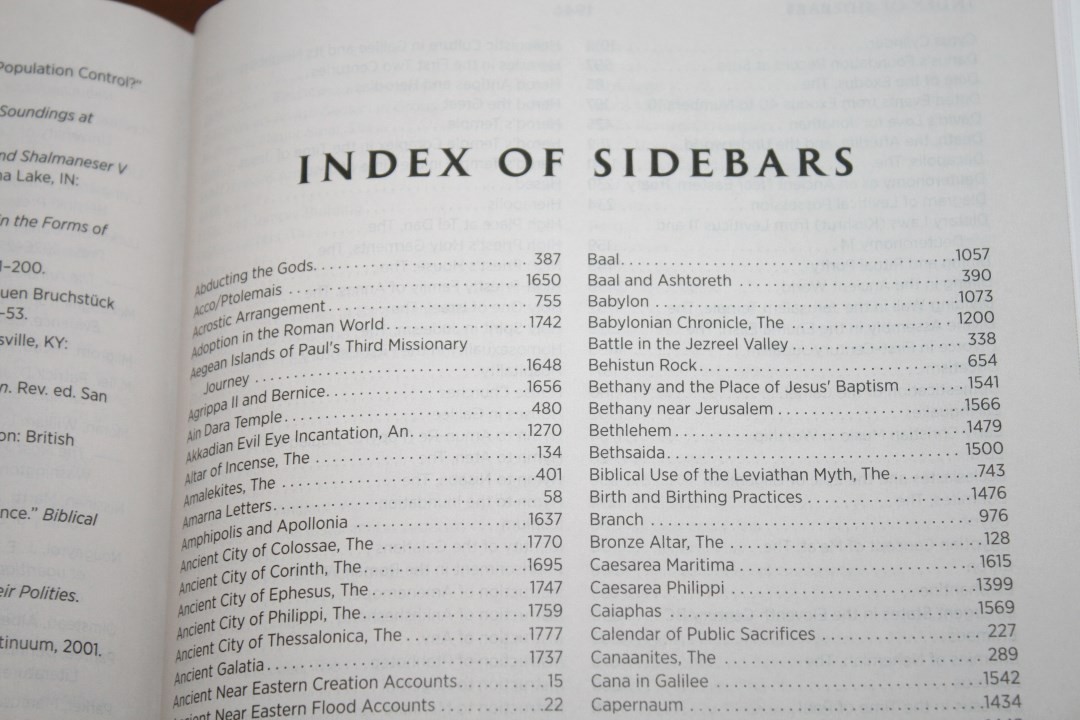
Glossary

The glossary is 4 pages and covers keywords that are used throughout this Bible. It mostly covers locations, people, beliefs, etc. It even has a few manuscripts and tools used for writing.
Bibliography

It includes a bibliography with lots of books so you can continue your study of biblical archaeology. I like that they’ve included this because it adds to the trustworthiness. These seem to be reliable references. I’ll have to grab a few of these myself.
Concordance

The concordance is 66 pages with 3 columns per page. This is an excellent concordance for study and sermon prep. Here are a few example entries with their number of references to help you compare:
- Christ – 17
- Christ’s – 3
- Christian – 2
- Christs – 1
- Faith – 36
- Faithful – 12
- Faithfulness – 7
- Faithless – 2
- God – 56
- Goddess – 2
- Godliness – 6
- Godly – 4
- Gods – 4
- Praise – 11
- Praised – 4
- Praises – 3
- Praising – 4
- Pray – 13
- Prayed – 5
- Prayer – 11
- Prayers – 7
- Praying – 4
Maps
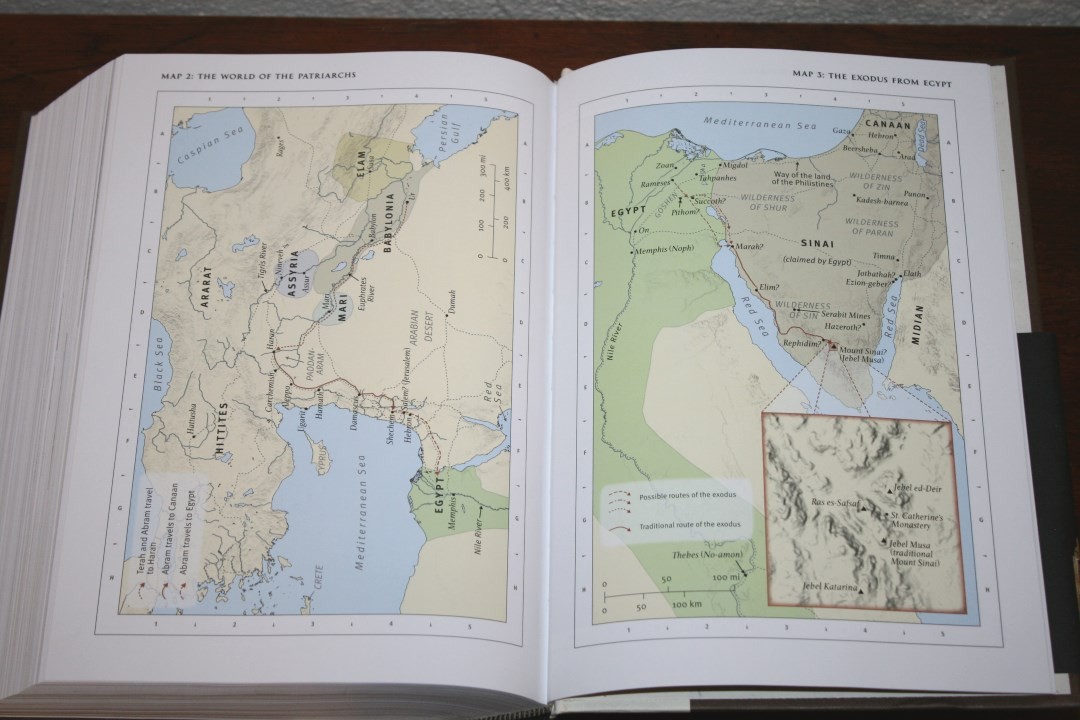
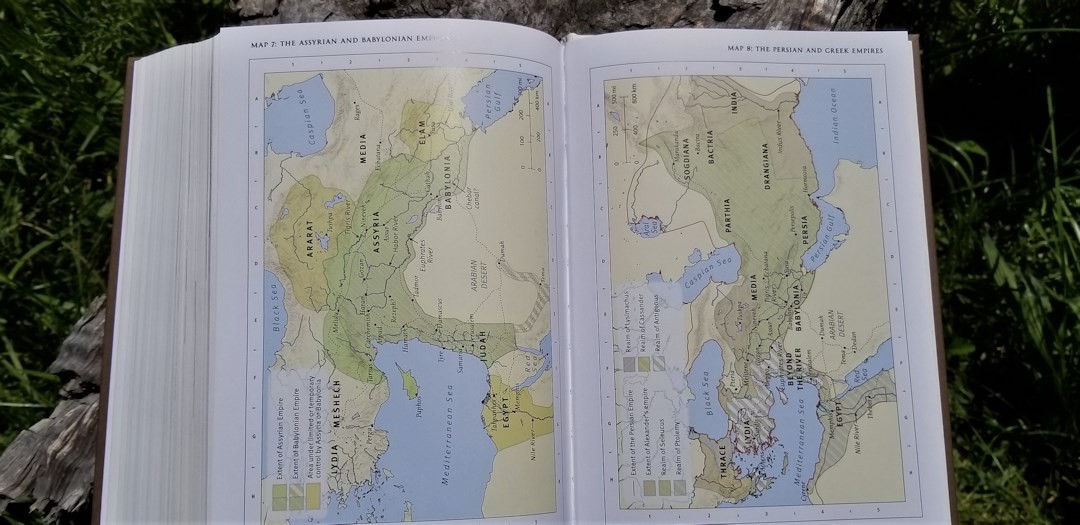
It has 15 maps on thick paper. They’re in color, but they’re not bright colors. They almost have a wash-out look. I prefer this to maps that are too bright, but I do like a little more color. There isn’t an index but they are labeled well and they’re easy to read. They include distance, journeys, routes, borders, topography, cities, cities of refuge, kingdoms, etc. Some of the kingdoms are shown by date.
Maps include:
- The Middle East Today
- The World of the Patriarchs
- The Exodus from Egypt
- The Tribal Allotments of Israel
- Israel under Saul, David, and Solomon
- The Kingdoms of Israel and Judah
- The Assyrian and Babylonian Empires
- The Persian and Greek Empires
- Israel under the Maccabees
- Jerusalem
- Palestine under Roman Rule
- The Apostles’ Early Ministry
- Paul’s First and Second Missionary Journeys
- Paul’s Third Missionary Journey and Voyage to Rome
- The Spread of Christianity in the First Two Centuries
Contributors

The contributors are professors, assistant professors, a lecturer, and even a couple of presidents. Each of them has in-field experience, so they’ve actually gotten their hands dirty. The list includes:
- John D. Currid
- David W. Chapman
- Stephen M. Oritz
- Catherine L. McDowell
- Lawrence T. Geraty
- David L. Adams
- Boyd Seevers
- Mark W. Chavalas
- Paul H. Wright
- Mark Wilson
- Thomas W. Davis
- Gerald L. Mattingly
- Larry G. Herr
- Barry J. Beitzel
- Richard S. Hess
Final Thoughts on the Archaeology Study Bible
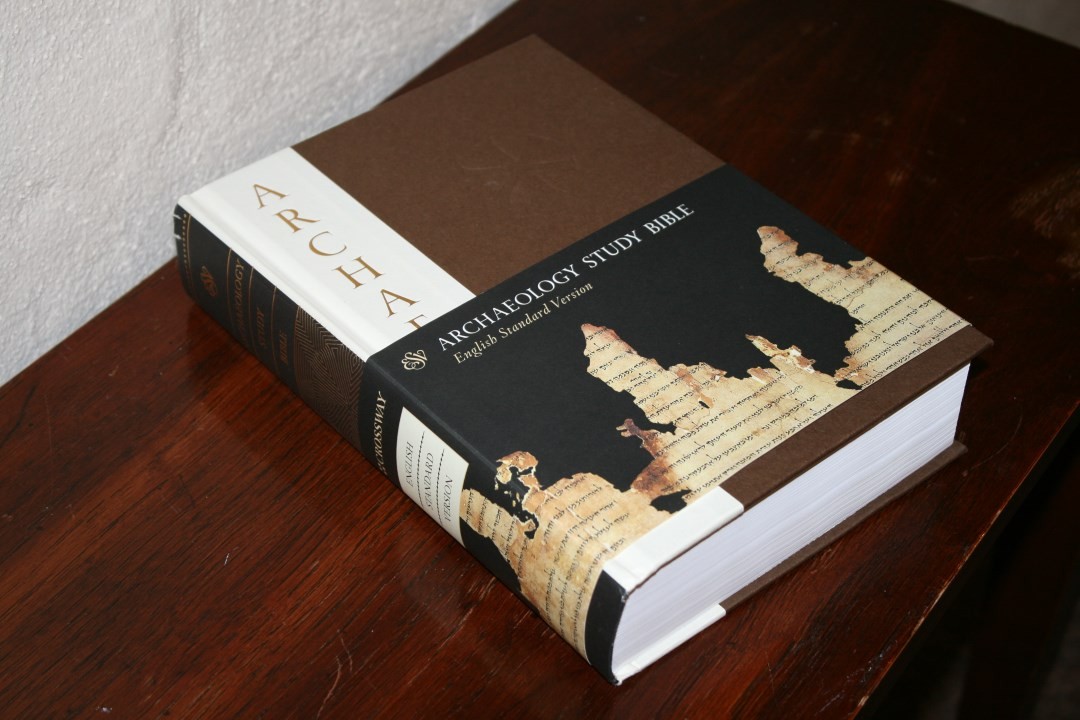
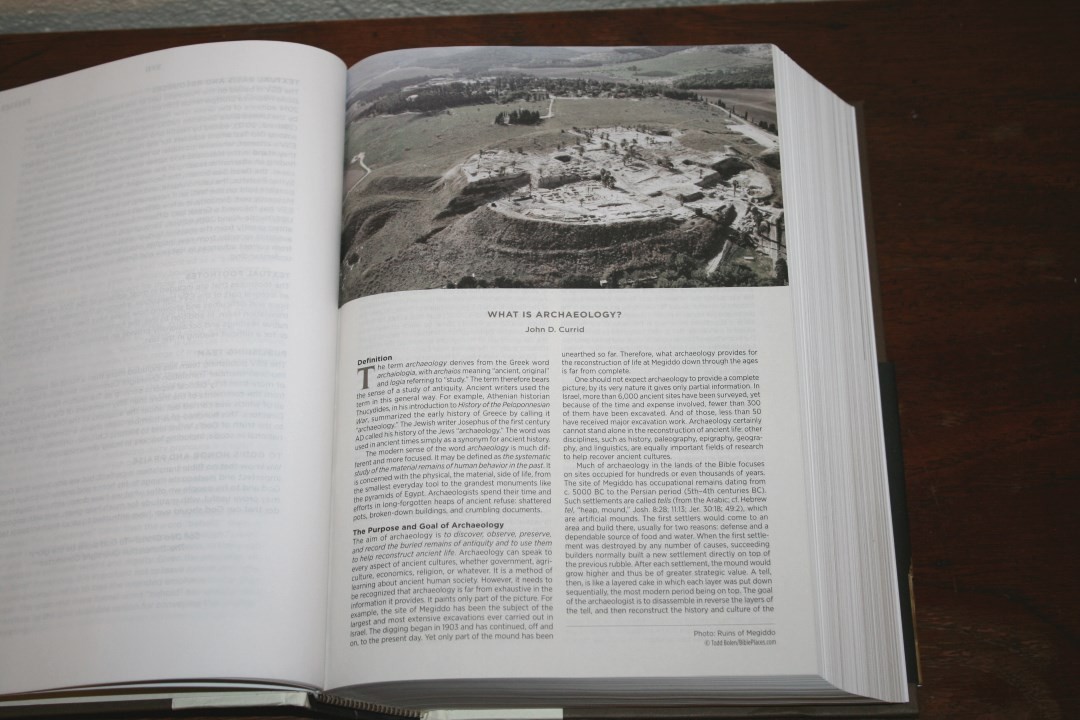
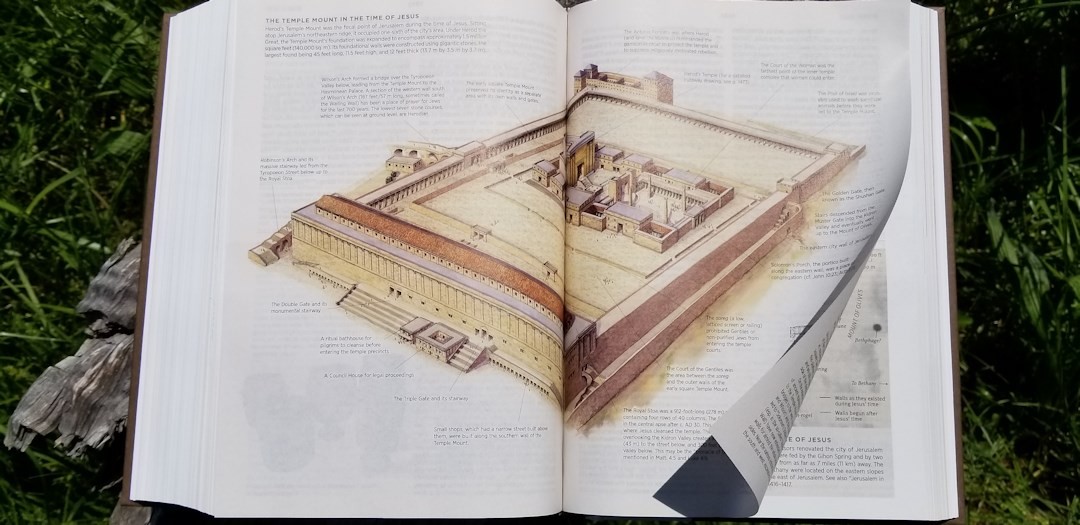
Of all the archaeology study Bibles available this one is my favorite. I like that it’s written by actual archaeologists and that it stays away from pop-archaeology. It does have the feel of trust-worthy scholarship. I also like that it focuses on archaeology and doesn’t try to do anything else. I especially like the notes and sidebars with all of their photos.
The only thing that feels missing to me is a master index. This is a small complaint and I’m just being picky. There are several smaller indexes to specific things, but if you’re looking for a certain topic you’ll have to look through each of them. Also, there isn’t an index to the articles. There is a list in the table of contents, but they’re not all listed in the same place. I’d also like to see more information about the manuscripts and their discoveries. Again this is just me being picky. It does include the Dead Sea Scrolls and lots of other findings in the sidebars.
This is a well-written study Bible and I plan to use this for many years to come. I’m grateful that Crossway has published this Bible in one of my favorite topics and didn’t stray too far from the topic. I highly recommend the ESV Archaeology Study Bible to anyone interested in biblical archaeology.
_________________________________________________________
This book is available at (includes some affiliate links)
and many local Bible bookstores
_________________________________________________________
Photography by hannah C brown and Randy Brown
Crossway provided this Bible free for review. I was not required to give a positive review, only an honest one. All opinions are my own.

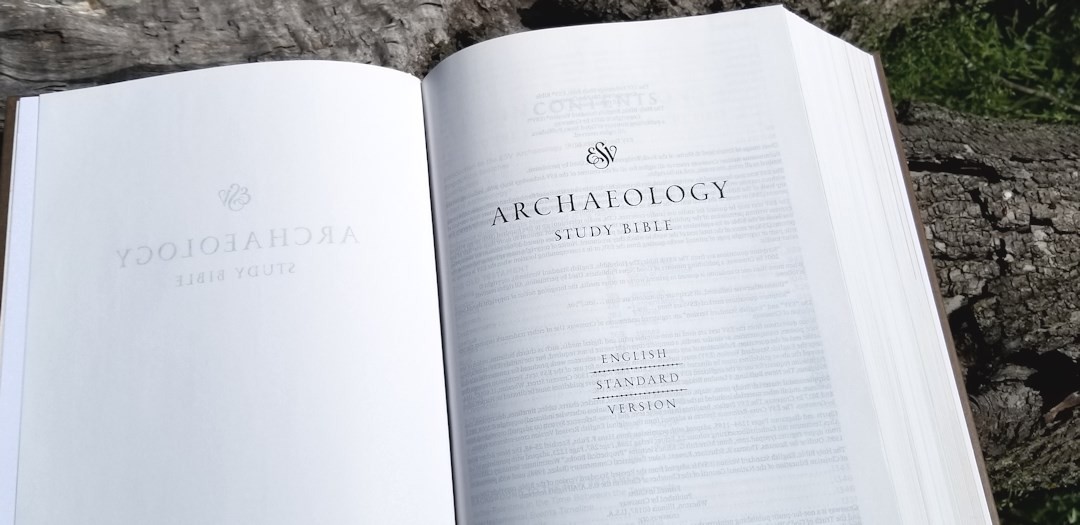
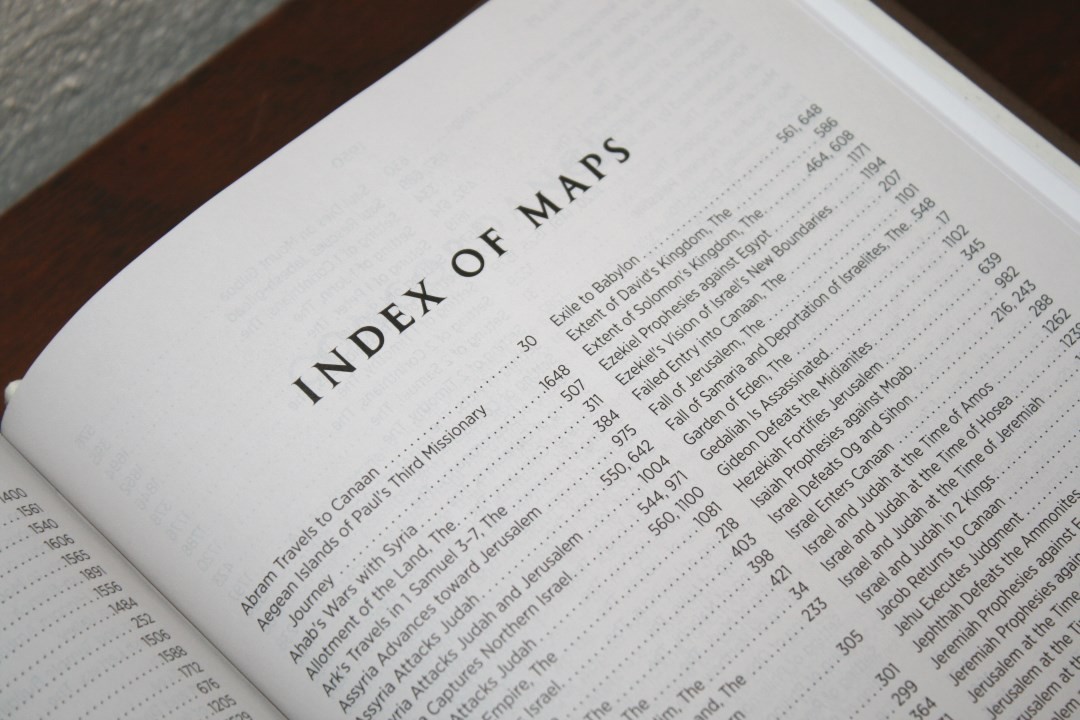


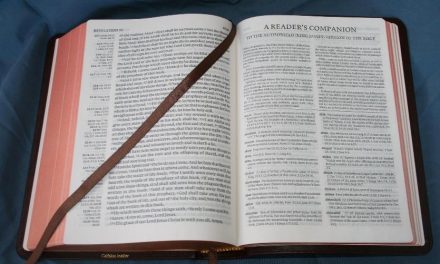
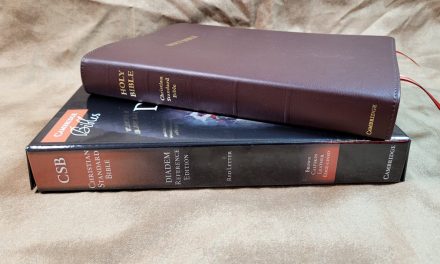
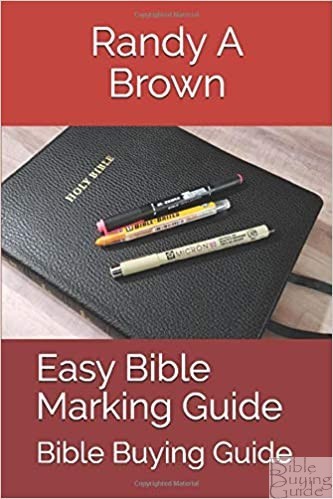
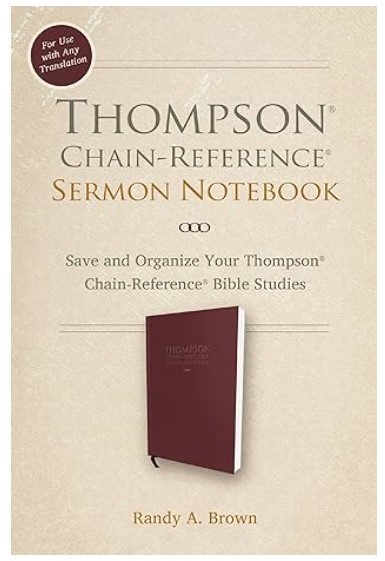



I love the ESV and have a study version. Ironically my small group was just talking about these types of bible and wondered what type of great info it may have. Thanks for the review of it and all the pics.
I was excited about this Bible’s release, and it has not disappointed me. I enjoy reading the notes and articles even when I’m not studying a particular passage.
Thank you, Randy, for a good, thorough review!
Thanks Gary!
Is it come with free access code to the online version?
No. It doesn’t mention anything about an online version.
Thank you for this review.
How does this compare to the Cultural Backgrounds Study Bible? Would it be redundant to have both?
Thanks Marc. It wouldn’t be redundant. They have a different focus. I hope to do some comparisons soon.
Thanks Randy. Look forward to the comparison. I really appreciate that your blog reviews high-end and budget Bibles. It has been a great research resource for me.
This blog is one of my favourites – in fact THE favourite when it comes to Bibles. Thank you so much for all the info – it’s invaluable for me in keeping up with the new editions in the shop where I work. The above Bible arrived & no sooner was it unpacked than I decided I would sell it to myself – it never got as far as being shelved. Often your photographs & detailed analysis help me to get a real feel for how a particular Bible differs from another. Thank you so so much for all the work you put into this.
Thanks Evy! I appreciate you for reading and for your feedback 🙂
Hi, I’m planning on buying a study bible, but i’m torn between this one and the esv study bible. Do you think it’s worth buying both?
Hi Hannah. It is worth buying both. They compliment each other and focus on different things.
Greeting’s I would like to find a bible that has what this esv has, but I am also in great need to understanding it like the amplified original greek and Hebrew. with all of the maps, charts, supportive info and notes, graphs, as a genuine study bible. can you point me in the right direction?
Hi Timothy. Are you looking for a study Bible? There are a few that you might like. The Global Study Bible might work for you. Another good choice is the Student Study Bible.